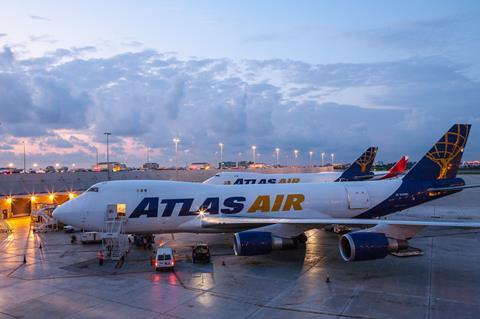The Federal Aviation Administration is ordering airlines to inspect fuel-tank lightning-protection features on all Boeing 747 variants because some components are degrading faster than expected.
The FAA issued the requirements in an airworthiness directive released on 29 November. It responds to reports from Boeing that lightning-safety components in 747 engine fuel systems had failed or cracked.
The rule takes effect in 16 days and requires airlines to act fast. Once effective, it gives carriers 90 days to inspect passenger 747s and 120 days to inspect cargo variants. Airlines will need to complete repetitive inspections at least once every 12 months.

The FAA issued the order as an final rule, not as a proposed rule, reflecting heightened risk. It applies to 211 US-registered 747s of all variants, from -100s to -8s
“The FAA has found that the risk to the flying public justifies forgoing notice and comment prior to adoption of this rule,” the order says. “This is an urgent safety issue, as all fuel feed lightning protection features now have evidence of compromise.”
The order requires airlines to follow inspection and repair procedures detailed in “Multi Operator Messages” sent to airlines by Boeing on 13 November.
“Boeing supports the US Federal Aviation Administration’s immediately adopted rule, which makes mandatory the guidance we have provided to operators. We remain in communication with the FAA and our customers on this matter,” Boeing says.
It adds that operators started inspecting 747s after receiving Boeing’s recommendations, and says the inspections take two to three days.
The risk involves components designed to prevent sparks along fuel tubes that penetrate 747 fuel tanks.
Specifically, “bonding jumpers” (which create safe paths for electricity) have been failing “at an excessive rate”, Boeing found, according to the FAA. The company discovered “a complete crack around” a 747-8’s “fuel feed fitting encapsulation”, which is designed to isolate sparks caused by lightning strikes.
“The lightning protection features for the engine fuel feed system could fail without being detected. This could result in no lightning protection features remaining,” the FAA says. “A lightning strike to an engine nacelle, in combination with flammable fuel vapours, could result in a fuel tank explosion.”
The rule continues the FAA’s multi-decade push to prevent fuel tank ignitions, set in motion by TWA 800, a 747-100 that exploded off the Long Island coast in 1996, killing all 230 people aboard. The jet’s centre wing fuel tank exploded, most likely due to a short circuit, the US National Transportation Safety Board concluded.
Atlas Air Worldwide Holdings and its affiliates operate 56 747s, more than any other US carrier. Other US airlines with sizeable 747 fleets include UPS (41 of the type), Kalitta Air (24) and National Airlines (eight), according to Cirium data. Airlines globally have 495 747s in service or storage.


























